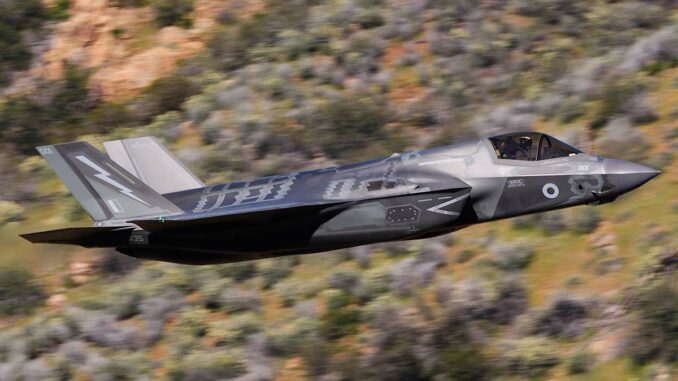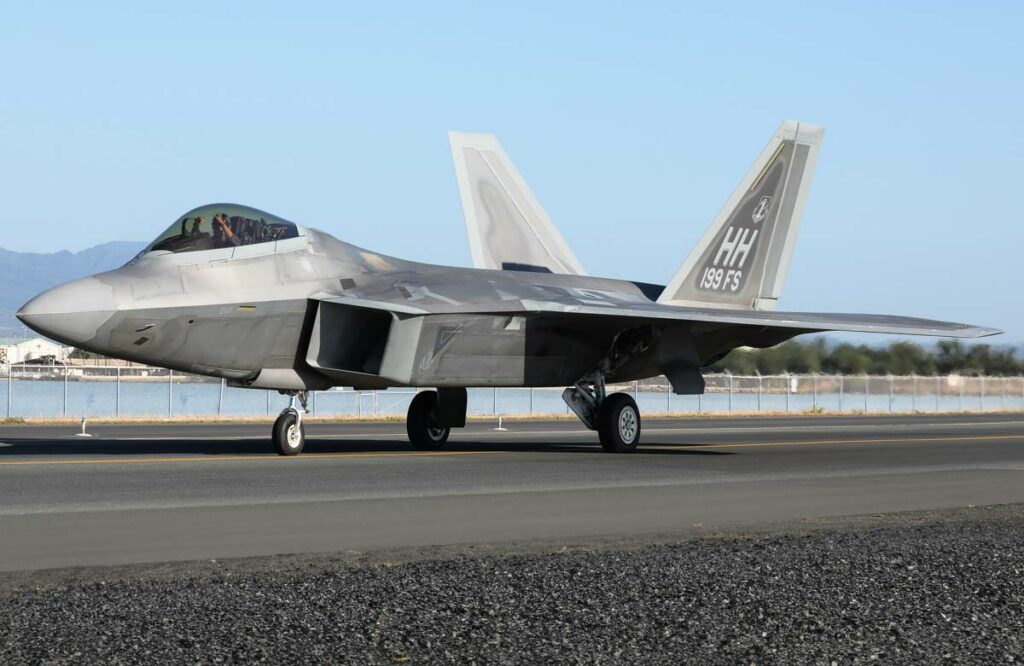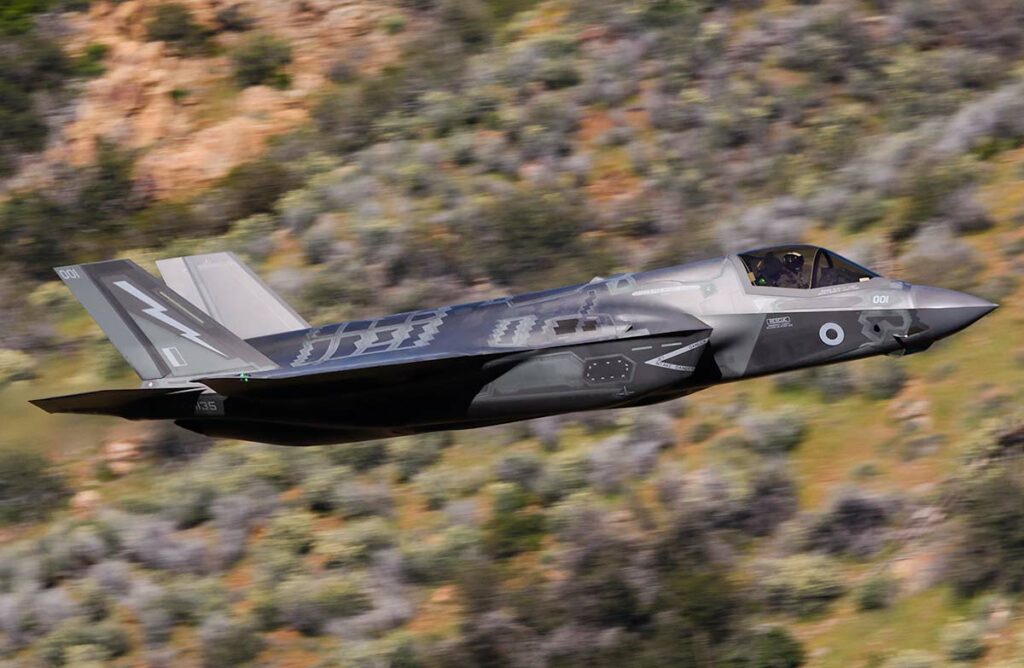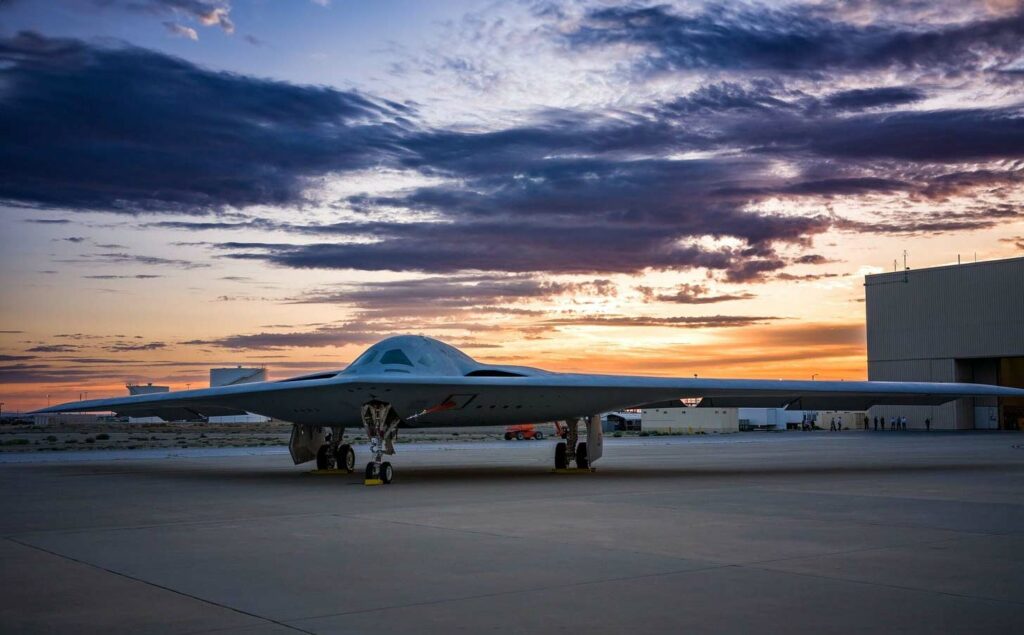
Stealth fighters represent a revolution in military air strategy, offering unprecedented capabilities that are redefining the rules of combat engagement. Equipped with advanced technologies that enable them to avoid detection by enemy radars, these aircraft play a crucial role in dominating airspace and carrying out strategic missions with minimal risk. Their importance in modern warfare cannot be underestimated, as they combine speed, firepower and, above all, near-invisibility to give them a considerable tactical advantage.
The history of stealth technology dates back to the Second World War, with the first research into reducing the visibility of ships by radar. However, it was during the Cold War that efforts to develop less detectable aircraft really took off, driven by the arms race between the USA and the Soviet Union. The 1970s and 1980s marked a period of significant breakthroughs, culminating in the entry into service of the first stealth fighters such as the F-117 Nighthawk. Since then, technology has continued to evolve, with the introduction of more sophisticated aircraft such as the F-22 Raptor and F-35 Lightning II, incorporating revolutionary advances in stealth, aerodynamics and weapons systems.
These developments testify to the strategic importance of stealth in modern military aviation, underlining an ongoing commitment to pushing the boundaries of technology to ensure air superiority.

I. Principles of stealth technology
Stealth technology is designed to make military aircraft less visible, or even invisible, to enemy detection systems, mainly radar, infrared detectors and acoustic surveillance systems. The aim is to minimize the aircraft’s signature in these different spectrums, thereby considerably increasing its chances of survival and mission effectiveness. The implementation of stealth is based on a combination of advanced techniques and hardware innovations.
Radar Signature Reduction
The radar signature of an aircraft is reduced by the use of specific shapes and materials that absorb or deflect radar waves. Angular shapes and flat surfaces are used to redirect radar waves away from the emitting source, thus reducing the amount of energy returned and picked up by enemy radar. A notable example is the design of the F-117 Nighthawk, characterized by its distinctive angular shapes. Composite materials, incorporating elements such as carbon fibers or polymer matrices loaded with metal particles, are also used to absorb radar waves. These materials can reduce an aircraft’s radar reflectivity to values as low as 0.1 square meters, compared with 15 square meters or more for conventional fighter jets.
Infrared Signature Reduction
Infrared signature is minimized by managing and dissipating the heat generated by the aircraft’s engines and systems. Exhaust gas cooling systems, for example, mix ambient air with hot gases to reduce emission temperatures. Low-emissivity materials are also used on external surfaces to reduce the amount of infrared radiation emitted. Some technologies reduce the infrared signature to less than 0.5 square meters, a significant reduction compared with non-stealth aircraft.
Acoustic Signature Reduction
The acoustic signature is reduced by using engines designed to be quieter, and by integrating noise attenuation devices in the engine nacelles. Techniques include modifying airflow trajectories and using sound-absorbing materials in engine structures. Although less quantifiable in metric terms than radar and infrared signatures, the impact of these measures is crucial for operations at low altitude or in quiet tactical environments.
Technologies and materials
Advances in composite materials and radar-absorbing coatings (RAMs) are at the heart of progress in stealth. RAMs can reduce an aircraft’s radar signature by absorbing up to 99% of incident radar energy, thanks to complex multilayer structures that trap and dissipate this energy in the form of heat. In addition to their radar-absorbing properties, composite materials offer the advantage of reducing aircraft weight, thus helping to improve aerodynamic performance and carrying capacity.
II. Tactical and strategic advantages
Stealth fighters are revolutionizing military doctrine thanks to their ability to operate in virtual invisibility, offering decisive advantages in today’s theaters of operation. Their design makes them capable of penetrating sophisticated enemy defenses, carrying out high-precision reconnaissance and surveillance missions, and carrying out targeted attacks with remarkable efficiency.
Ability to operate undetected
Stealth technology reduces the distance at which an aircraft can be detected by enemy radar. For example, while conventional radar can detect a non-stealth aircraft at a distance of over 150 kilometers, this distance can be reduced to less than 20 kilometers for a stealth aircraft, or even be completely undetectable, depending on the angle of approach and environmental conditions. This ability to evade detection enables stealth aircraft to infiltrate enemy airspace and reach their targets with minimal risk of interception.
Impact on military strategy and deterrence
The integration of stealth aircraft into the armed forces is profoundly changing offensive and defensive strategies. Their ability to operate undetected makes it harder for adversaries to defend their airspace and strategic installations, forcing a reconsideration of defense systems and military tactics. In terms of deterrence, the mere possession of stealth aircraft by an armed force may suffice to deter hostile action, in the knowledge that any attempt at aggression could be met with precise and unpredictable strikes.
Advantages in Reconnaissance, Surveillance and Precision Attack
Stealth aircraft excel in ISR (Intelligence, Surveillance, Reconnaissance) missions, thanks to their ability to approach targets undetected. Equipped with advanced sensors and secure communications systems, they can collect vital data in enemy territory, with previously unattainable resolution and precision. In terms of precision attack, stealth aircraft can carry a range of guided weapons, such as cruise missiles and guided bombs with CEP (Circular Error Probable) reduced to less than 3 meters, enabling them to strike targets with surgical precision while minimizing collateral damage.
The combination of these capabilities not only enhances the operational effectiveness of armed forces equipped with such aircraft, but also changes the dynamics of modern conflicts. The possession of stealth fighter aircraft confers an undeniable strategic advantage, enabling operations that were previously deemed too risky or impossible, and significantly increasing the spectrum of military options available to commanders. By reducing vulnerability to air defense systems and maximizing the element of surprise, stealth technology transforms the way missions are planned and executed, placing the adversary at a constant tactical and strategic disadvantage.

III. The main stealth fighters
Stealth fighters have revolutionized modern air warfare thanks to their advanced technology. Among them, the F-22 Raptor and the F-35 Lightning II stand out for their technological and tactical superiority, while other international developments are also contributing to the diversification of the aerial stealth landscape.
F-22 Raptor
The F-22 Raptor, developed by Lockheed Martin, is considered to be the first fifth-generation fighter aircraft to feature advanced stealth technologies. Operational since 2005, the F-22 has a wingspan of 13.56 meters and a length of 18.92 meters. Its radar signature is reduced by the use of radar-absorbing materials and its angular design, minimizing its detectability. Capable of reaching a top speed in excess of Mach 2, the Raptor is equipped with sophisticated avionics and can carry out air-to-air and air-to-ground missions with formidable efficiency. Its armament includes AIM-120 AMRAAM and AIM-9 Sidewinder missiles, as well as JDAM guided bombs.
F-35 Lightning II
The F-35 Lightning II, also developed by Lockheed Martin, is a multi-role aircraft designed to operate in various branches of the US armed forces and partner nations. With a length of 15.67 meters and a wingspan of 10.7 meters, the F-35 is available in three variants (F-35A, F-35B, F-35C) tailored to the specific needs of the Air Force, Marine Corps and Navy. The F-35 incorporates state-of-the-art stealth technology, thanks in particular to composite materials and a design optimized to reduce its radar and infrared signature. Its ability to carry out air superiority, ground strike and reconnaissance missions makes it a central element of modern military strategy. The F-35 can fly at a maximum speed of around Mach 1.6 and is equipped with a wide range of weapons, including air-to-air missiles, guided bombs, and a 25mm internal cannon for the F-35A.
International developments
Other countries have also invested in stealth technology, developing their own fifth-generation fighters. Among them, the Russian Sukhoi Su-57 and the Chinese Chengdu J-20 stand out. The Su-57, with a length of 20.1 meters and a wingspan of 14.1 meters, aims to combine stealth, supersonic speed and advanced avionics to rival American fighters. The J-20, meanwhile, with a length of around 20.4 meters and a wingspan of 12.88 meters, is the People’s Liberation Army’s first operational stealth fighter, designed for air superiority and precision strike missions.
Capability comparison
Although each stealth fighter has its own particularities, they share common capabilities such as radar and infrared signature reduction, air superiority, and versatility in attack missions. The F-22 excels in air-to-air combat thanks to its exceptional maneuverability and stealth, while the F-35 stands out for its versatility and ability to operate from a variety of platforms. International developments such as the Su-57 and J-20 bring comparable skills, although precise information on their stealth technology and performance remains less accessible.
IV. Challenges and constraints
Stealth fighters, while offering significant tactical and strategic advantages, face several major challenges, notably in terms of cost, aerodynamic performance, armament, and vulnerabilities to enemy countermeasures.
High development and maintenance costs
The development of stealth aircraft involves colossal financial investments, with costs that can run into billions of euros for design, construction and testing. The F-35 Lightning II, for example, has become one of the most expensive weapons programs in history, with development costs estimated at over $1.5 trillion over the life of the program. Maintaining these aircraft is also costly due to the need to preserve their stealth, requiring special materials and advanced repair techniques. Regular maintenance is crucial to maintain stealth effectiveness, which significantly increases operational costs.
Aerodynamic performance and weapons issues
Stealth aircraft design can compromise aerodynamic performance and weapons-carrying capacity. Angular shapes and internal weapons bays, while essential for reducing radar signature, limit maneuverability and maximum speed. For example, the F-117 Nighthawk, while revolutionary, was limited in terms of speed and agility when compared to traditional fighter aircraft. Similarly, internal weapons carriage reduces the quantity and variety of weapons an aircraft can carry, which can affect its versatility and offensive capability.
Potential vulnerabilities and countermeasures developed by adversaries
Despite their advanced technology, stealth aircraft are not invincible. Adversaries are constantly developing new techniques and technologies to detect and intercept these aircraft. Low-frequency radars, for example, can potentially detect stealth aircraft by exploiting their longer wavelength to bypass certain stealth techniques. In addition, advanced sensor networks and electronic warfare systems are constantly being improved, increasing the risk of detection. Stealth aircraft must therefore constantly evolve to counter these threats, requiring regular updates of their technology and tactics.
In conclusion, although stealth fighters represent a pinnacle of modern military engineering, they face significant challenges that require ongoing investment in research and development, as well as constant adaptation to opposing technological evolutions. Their effectiveness on the battlefield depends not only on their initial design, but also on the ability to maintain their technological edge against innovative adversaries.

V. Geopolitical impact and the arms race
Stealth fighters play a crucial role in redefining the global balance of power, profoundly influencing international relations and global security. Their development and deployment by major military powers underline the strategic importance of air superiority in modern defense doctrine.
Role in global power balances
The possession of stealth aircraft is often seen as an indicator of a nation’s advanced military strength, contributing to its status as a global or regional power. The United States, with the F-22 Raptor and the F-35 Lightning II, has long dominated the field of aerial stealth, but other nations such as Russia with the Su-57 and China with the J-20 are seeking to challenge this supremacy. This dynamic is prompting an arms race in which the ability to develop or acquire stealth aircraft is becoming a key element of national defense strategy.
Effects on international relations and global security
The proliferation of stealth fighters can exacerbate regional tensions and accelerate arms races. For example, the sale of F-35s to US allies has raised concerns among rival nations, who perceive such transfers as a threat to their security and an incentive to develop or acquire similar technologies. This dynamic can potentially lead to regional instability, as each nation seeks to maintain or achieve military superiority.
Future Prospects: Expected Innovations and New Nations Entering the Race
The future of stealth fighters is marked by ongoing research to improve their stealth, performance and versatility. Innovations in materials, avionics and weapons systems are at the heart of these efforts. In addition, the integration of artificial intelligence to improve combat decision-making and predictive maintenance could revolutionize the use of stealth aircraft.
At the same time, new nations are expressing interest in developing or acquiring stealth technologies, seeking to secure their airspace and strengthen their defense posture. Countries such as India and Japan have expressed their intention to develop or purchase stealth aircraft, which could alter the balance of power in their respective regions.
Stealth fighters continue to play a decisive role in global military strategy, influencing international relations and global security. The stealth arms race, while stimulating technological innovation, presents challenges in terms of regional stability and arms control. Nations around the world are keeping a close eye on future developments in this field, aware of its potential impact on the balance of power and world peace.
War Wings Daily is an independant magazine.